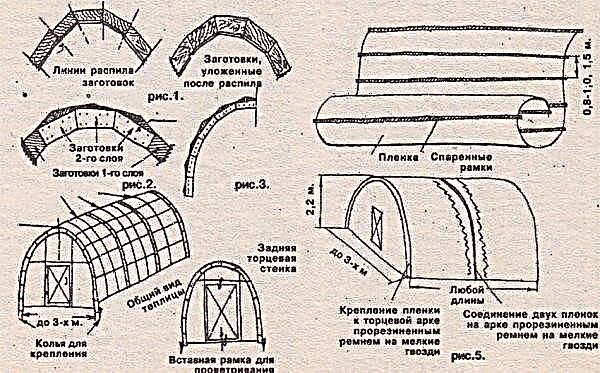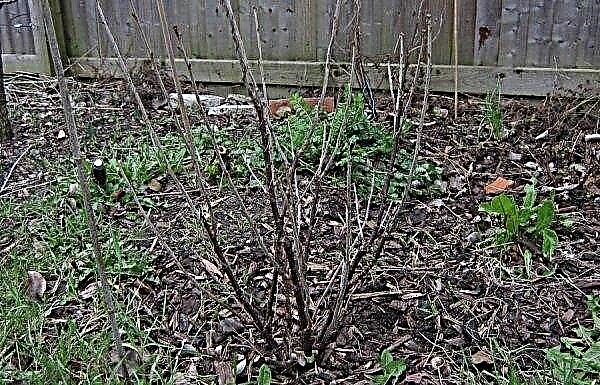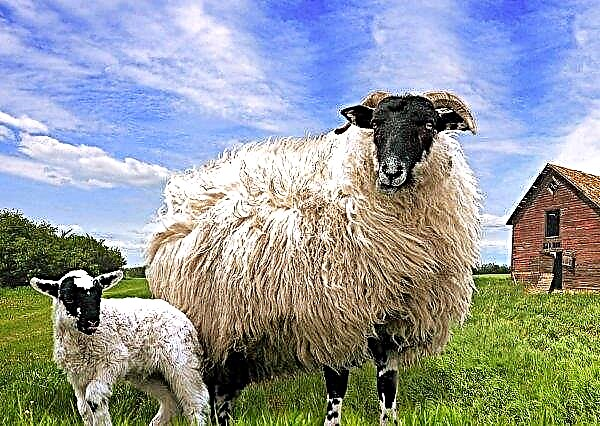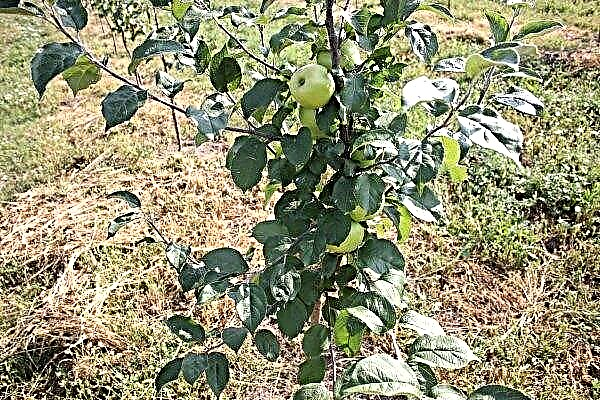In order for poultry to maintain normal health for a long period of time, it is necessary to provide it with comfortable living conditions. The maximum productivity of poultry is ensured not only by high-quality food and plentiful drink, but also by a clean spacious chicken coop. The prefabricated building of the chicken coop can be purchased at a special market, or you can make it yourself. This article will discuss the materials and tools for making the chicken coop, its placement on the site, the internal structure, design and linear dimensions.
Location on the site
When placing a chicken coop on the site, pay attention to the following parameters:
- Dry soil. It is only necessary to install the chicken coop in those areas where water does not stagnate. Choose lands on elevations, avoid lowlands, hollows and foots of slopes. If the site is clayey and prone to water accumulation, dig trenches to drain it.
- Lack of drafts. Since the poultry easily catches cold, it must be placed in a place protected from the wind and to build additional protection from the wind (hedge or wooden fence).
- Shading. Overheating of the bird leads to the loss of plumage and cannibalism. To prevent this from happening, make a canopy over the territory of the aviary.
- Sufficient area. Collect the enclosure and the chicken coop taking into account the planned livestock. Each hen should have at least 1 sq. Km. m of free space - this will beneficially affect their productivity.
- No noise. Persistent monotonous noise, such as the hum of a highway or transformer, annoys poultry. Make sure your house is far enough away from such irritants.
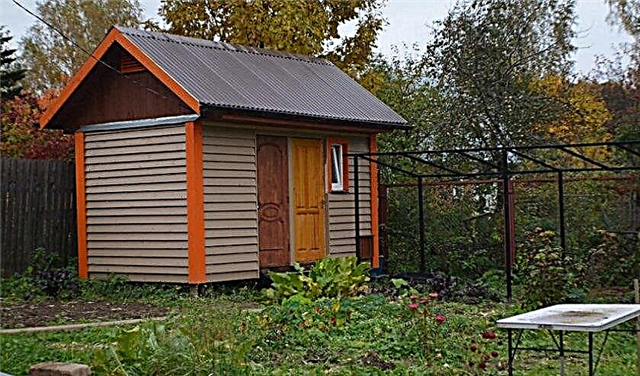
Design and dimensions
A detailed project needs to be developed regardless of what material the house will be made of. Plan three projections at once, indicate in the project all possible details. A detailed project will help to accurately calculate the cost of construction and the required amount of building materials.
Important! For young chickens growing up, the presence of an enclosure is very important - they can serve as a small area for walking. The regular exercise of the bird ensures its well-being and harmonious development.
Lay in the attic space in the project, where it will be convenient to store food, equipment for maintenance.
Please note that in the room for one layer should be at least 0.5 square meters. m square. The need for farm buildings, an aviary, roosts and feeders increases this area to 21–22 square meters. m for 20 layers. The height of the chicken coop should be at least 2 m for a comfortable stay of people in it.
Chickens cannot tolerate confined spaces with a small living area, so keep a normal number of chickens in the house to maintain their productivity.
Materials and tools for work
To assemble the house with your own hands, you will have to use certain construction tools.
Purchase or lend ahead of time to the following toolbox:
- roulette;
- shovel;
- hand saw;
- construction line;
- a simple pencil;
- hammer;
- rope;
- wooden pegs;
- nails.
Did you know? One-day-old chickens exhibit complex reflexes that become accessible to the human cub closer to the second year of life. The adult individual, in turn, is able to distinguish up to hundreds of human faces and react differently to their appearance, distinguish the host from other people from a distance of 20 steps, navigate in time and space.
As for the materials, it is recommended to use the following components for high-quality and durable construction:
- bricks;
- concrete mortar;
- roofing material;
- galvanized wire mesh;
- mineral wool;
- the lattice is small;
- gravel, sand;
- jute;
- boards, wooden bars;
- gate valve;
- steel rods;
- expanded clay;
- tile or slate;
- Door hinges.
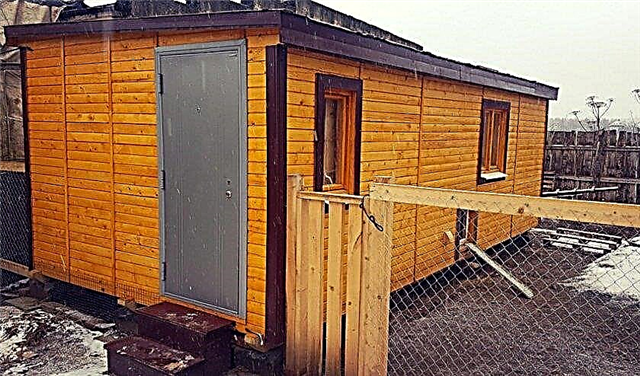
How to make a chicken coop for 20 chickens
The construction of the house takes place in several stages, the sequence of this process determines the complex structure of the chicken coop.
Foundation building
- Start laying the foundation with the layout of the site with pegs and rope.
- Remove the top layer (20-30 cm) of fertile moist soil and transfer it to the crops.
- Dig additional pegs exactly in the center of each side of the resulting rectangle.
- Near each peg, dig a hole 70 cm deep and with sides 50x50 cm under the supporting posts.
- Screw a straight steel bar 80 cm long into the center of each hole.
- At a level of 25 cm from the ground, pull a rope between the rods - this will be your hydraulic level.
- At the bottom of each hole, pour gravel mixed with sand, ram it to a thickness of 10 cm.
- Fold pillars of bricks fastened together with cement mortar around the rods.
- Their height should reach the hydraulic level.
- Cover the area from which the soil was removed, cover it with fine gravel (5 cm layer) and carefully roll it.
Masonry floor
- On top of the posts, lay the harness securing the floor to the foundation. To keep the floor dry and reliable, lay it in several layers of roofing material.
- Lay on top of the roofing material the logs that hold the weight of the house and its inhabitants. Make lattice logs, from smooth dry bars.
- Gaps formed between the lags and roofing material, cover with large expanded clay.
- Lay the floor from an untreated board 2.5 cm thick on top of the logs.
- Then install moisture and vapor barrier.
- Cover the cotton with wooden blocks.
- Dig a gap between them with insulation (mineral wool).
- Put a polished edged board on the boards with the second layer.

Walling
Lift the walls from the floor according to the mortise principle of fastening. Be sure to leave a gap for the windows and the front door. To keep the house cool, make spaces between the boards with coiled jute.
Important! To prevent the deep litter from spilling out from under the doors of the chicken coop in the cold season, fill a narrow strip on the bottom of the door. It will stop sawdust and prevent the occurrence of draft in the room.
Roof device
Give preference to a gable roof - moisture will not linger on it, and in the warm season the house will not overheat at noon. With the ends, attach the rafters to the ceiling logs at an obtuse angle to support the roofing.
Choose the flooring according to your financial abilities, because in the house you can use both slate and tile.
Make the ceiling
Start with the ceiling lags - with a harness, attach them to the upper rectangle of the bars. Sheathe logs with plywood shields, or better with a treated board. Fasten the boards with nails, since building brackets and glue tend to weaken for 3-4 years after construction.
Doors and windows
To cut windows into the walls, make frames from the bars and glaze them with thick glass. Equip the windows with shutters at night and make them openable on hinges for additional ventilation.
Ventilation
When laying the house, leave two small openings for ventilation ducts in the opposite walls of the house. Cover the openings with ventilation boxes. Place one hole almost under the ceiling, leave the other 0.5 m below the first. Air flows will increase, and the house will always have a comfortable microclimate. Be sure to install dampers in the ventilation ducts so that the air flow can be blocked in the cold season.
Air flows will increase, and the house will always have a comfortable microclimate. Be sure to install dampers in the ventilation ducts so that the air flow can be blocked in the cold season.
Additional lighting
Birds need a long daylight in order to produce a large number of products. Young growth should be under daylight 23 hours a day, for adults, the duration of daylight hours is reduced to 16-18 hours. A normal lighting level will be maintained by windows, the total area of which should occupy at least 15% of the total area of the walls of the house. Daylight lamps must be kept on from 06:00 to 21:00, even if the birds are mostly on the street.
A normal lighting level will be maintained by windows, the total area of which should occupy at least 15% of the total area of the walls of the house. Daylight lamps must be kept on from 06:00 to 21:00, even if the birds are mostly on the street.
Two lamps suspended at different ends of the room will be enough for a chicken coop for 20 birds.
Did you know? Modern cultural breeds of chickens are descendants of the primitive Banking jungle chickens that lived in the early XVII century BC. e. on the territory of modern Asia. Initially, they started to breed them for the warm soft fluff, and only then became interested in the nutritional qualities of chicken eggs and meat.
Coop device inside
In addition to the outer wooden frame on the foundation, the chicken coop needs additional equipment with perches, nests, feeding places, and also needs to be cleaned daily.
Perches
Are placed both in one room with nests, and in separate. They are thin poles placed and two or more rows in the type of stairs. Designed for comfortable placement of birds in the chicken coop. To choose a rooster suitable for your chicken coop, focus on the number of birds in the room, the difference in their growth.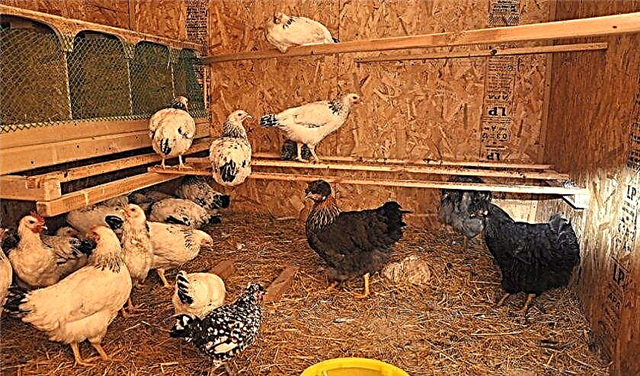 For a homogeneous livestock, choose multi-level perches; for birds of different ages and strengths, purchase single-level trellised and pallet perches.
For a homogeneous livestock, choose multi-level perches; for birds of different ages and strengths, purchase single-level trellised and pallet perches.
Nests
There are open and closed type. Closed models are better suited for young troubled birds; for adult laying hens, one can restrict oneself to open nests. The linear dimensions of the nest should be at least 35x50 cm. The number of nests is calculated in this way: the livestock is divided into two. Therefore, for a chicken coop for 20 goals, 10 nests will be enough.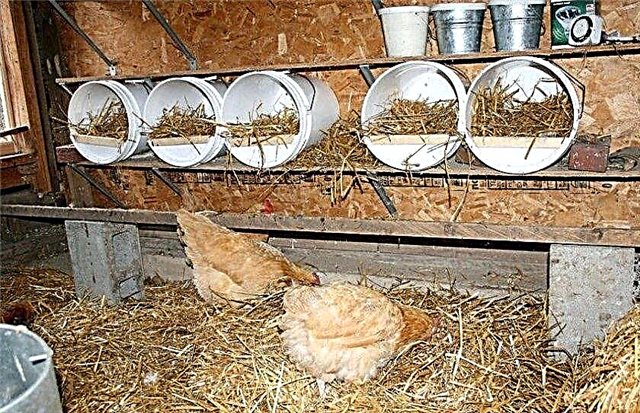
Feeding troughs and drinking bowls
Feeders differ from each other in the material of manufacture and are:
- plastic;
- wooden;
- from ergostekla.
Important! If you plan to feed young growth, set up tray troughs for it. They are resistant, and feed from them during feeding not scattered.
They are also divided by type of feed distribution into:
- tray;
- grooved (automatic);
- bunker.
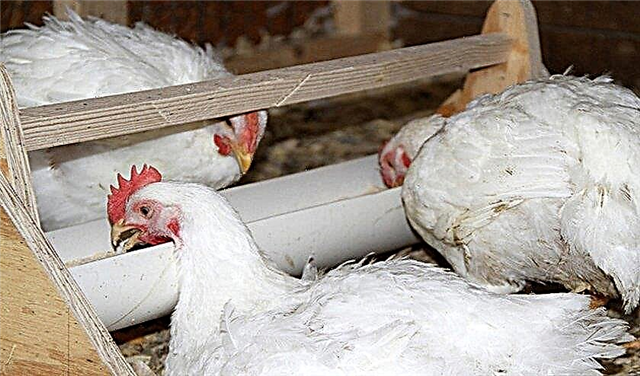 Drinking bowls are:
Drinking bowls are:- nipple (automatic);
- cup;
- conventional capacitive.
Choose drinking bowls and feeders, focusing on the age of the livestock and its quantity. On large farms, it makes sense to use automatic installations, as well as in young herds.
Litter
It is used mainly in the cold season to prevent freezing of paws in birds, their colds. It is poured with a layer of 5-7 cm, and then trampled by the birds themselves and at the same time mixed with droppings. Peat or clean, dry sawdust, which have high hygroscopicity, are used as litter.
In the warm season, it is not necessary to use the litter - pouring a thin layer up to 1 cm deep is allowed, followed by cleaning out of the chicken coop once every two days.
Patio for walks
Attaches to the chicken coop in case of outdoor rather than cellular keeping of birds. If there is a courtyard at the chicken coop, the chickens will be in the open air all day and will only enter the room when night falls.
Regular exercise has a beneficial effect on the productivity of poultry, so the yard is equipped with almost every chicken coop. It is a territory enclosed by a fence and a mesh roof, on which there are drinking bowls with clean water, grain feed is poured and forage grass grows.
A separate entrance is allocated from the chicken coop to the courtyard, through which the bird enters the fenced area.
Winter insulation
The temperature in the room for chickens should not fall below 0 ° C, then they will maintain egg production in the winter. To ensure a comfortable microclimate, warm the room for the winter with insulating materials or heating elements.
Fan heaters and infrared lamps have a relatively high cost, but pay off in the first two years after the acquisition. Mineral wool, flax jute and polystyrene are convenient and hygienic materials for closing gaps in drafts. They are used when it is not possible to purchase a heater for the house or if there is a desire to increase its thermal efficiency.
Mineral wool, flax jute and polystyrene are convenient and hygienic materials for closing gaps in drafts. They are used when it is not possible to purchase a heater for the house or if there is a desire to increase its thermal efficiency.
Sawdust is also considered a reliable and proven material for insulation. Their regular pouring on the floor of the house to a height of 50 cm allows chickens to calmly survive the cold.
Did you know? The oldest written mention of chickens in human history dates from the 13th century BC. It was found in the tomb of the pharaoh Tutankhamun and depicted chickens as a massively used poultry.
A chicken coop for 20 chickens can be purchased in a store in a collapsible condition, or you can build it yourself in the form of a reliable stationary structure. The construction process begins with laying the foundation, and ends with the installation of feeders and drinking bowls for poultry.
Provide your bird with comfortable living conditions, and it will delight you with high productivity at any time of the year.

